Vivo seems to be doubling down on its ambitions in the flagship smartphone space, and the new X70 series is a good example. The brand has been churning out stylish phones with a focus on cameras as its top priority, while aspects such as display and performance have been given high weightage as well. The Vivo X70 Pro+ (review) has already been adjudged as one of the best camera phones available by us, and that’s no mean feat with the likes of iPhone 13 Pro, Galaxy S21 Ultra (review), and others vying for the same title.

I have my hands on the regular Vivo X70 Pro which also boasts gimbal stabilisation but unlike its Pro+ sibling, the mechanism is present only on the primary sensor and not on the ultra-wide one. However, the partnership with German camera hardware maker Zeiss is still an integral part of the device. Other noteworthy features on the X70 pro include the Dimensity 1200 chipset, FHD+ 120Hz AMOLED screen, 44W fast charging, and more. Starting at Rs 46,990, the X70 Pro’s pricing doesn’t so much disrupt the affordable flagship space as much as make a small dent in it. How much sense does buying the X70 Pro make? Let’s find out in this full review.
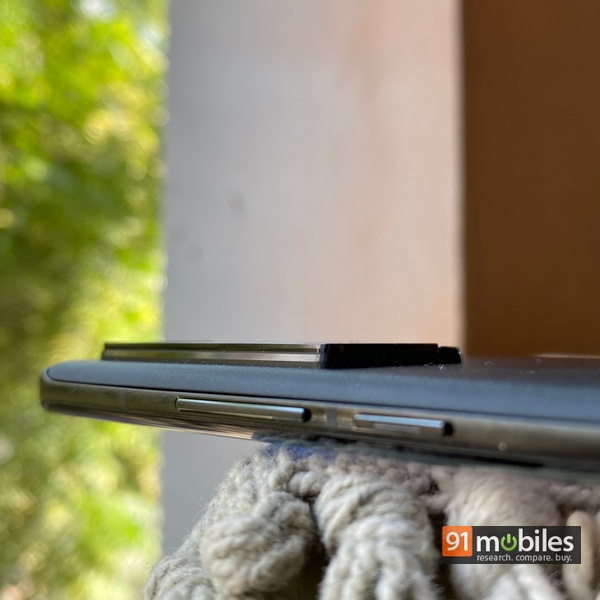
Verdict
For its price, the Vivo X70 Pro does feel slightly short in the performance department relative to the Qualcomm Snapdragon 888 smartphones in the market. The software isn’t that clean and the lack of stereo speakers puts a dampener on the viewing experience. However, the phone more than makes up for it with its stellar optics.
Design and display
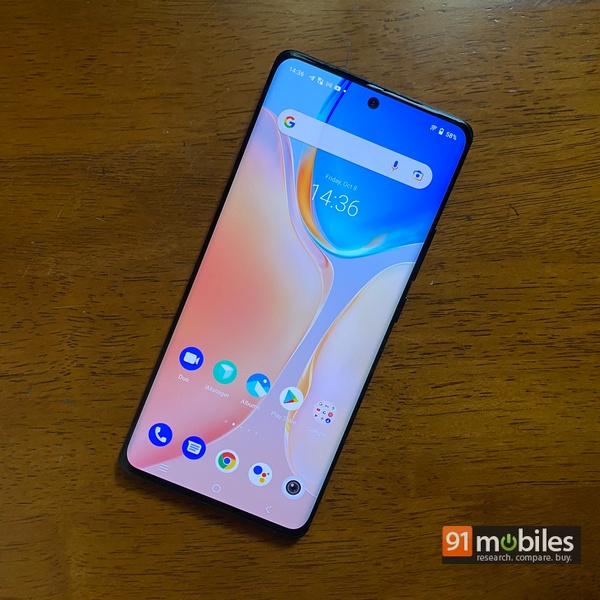
Let me just say that the matte-black glass finish on the Vivo X70 Pro provides one of the most satisfying in-hand feels that I’ve seen in a long time. Fingerprints and smudges? The X70 Pro won’t have any of it. It’d be a shame to even slap on the clear silicone case that Vivo has very generously provided inside the box. There’s a sandstone-finished material employed on the back, which just adds panache to the phone’s visual appeal. The symmetry between the front glass curving on the side and meeting the rails as cleanly as the curve on the back does is a mark of delicate craftmanship that reviewers like me hold in high regard. Vivo has stuck to its roots of making slim and light smartphones while ensuring a robust build that shows as clear as day on the X70 Pro. The phone weighs 183g, measures 7.9mm in thickness and the narrow aspect ratio makes for easy one-handed usage. The quad-camera module is a rectangular slab that protrudes several millimeters from the chassis emphasizing the intricate camera hardware housed inside. There’s a single bottom-firing speaker present on the bottom alongside the USB C port and dual-SIM slot, and the lack of stereo speakers seems like a reasonably big miss.

Moving on to the front panel, the Vivo X70 Pro makes use of a 6.5-inch curved AMOLED screen with 120Hz refresh rate and FHD+ (2,376 x 1,080) resolution. Now, this isn’t the same LTPO technology employed on the Pro+, but the display does have a variable refresh rate option to switch between 60 and 120Hz whenever necessary. The default colours on the panel are slightly cooler and a bit punchier than I would’ve liked but that can be easily tweaked with the Screen colors option in display settings. The excellent contrast ratios and white balance on the AMOLED screen are very apparent whether you are using it as a media consumption device or just browsing via Chrome.
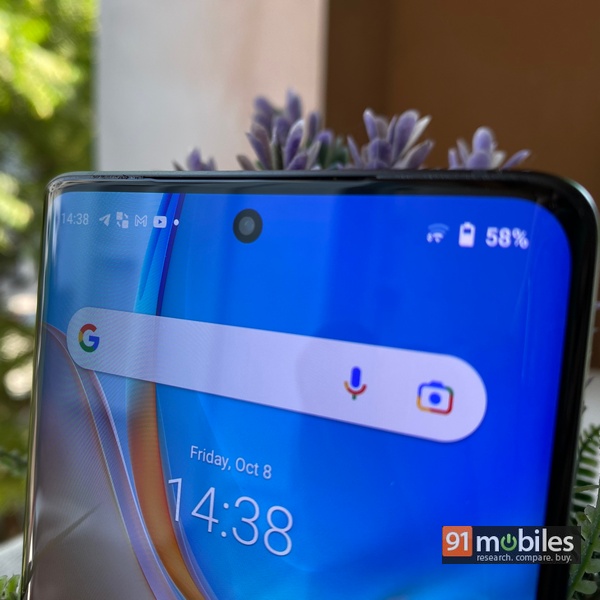
The HDR10+ compliance amplifies the visual nature of OTT content on all platforms. As for the fluidity of animations and UI, the Dimensity 1200 proves to be more than capable of sustaining the high refresh rate across the interface. Brightness levels were ample for any kind of outdoor usage. The display does register a lot of accidental touches that are irritating and sap my enthusiasm for seeing more curved displays in the flagship space. There is the hole-punch at the top-center occupying as little space as it possibly can.
Cameras
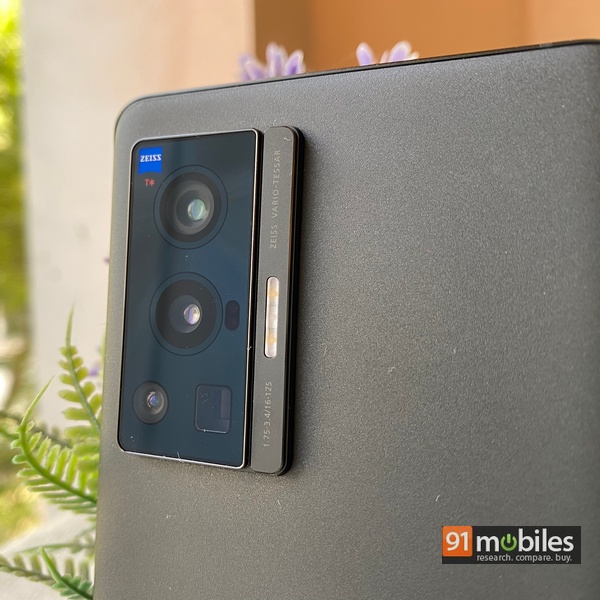
Right then, the X70 Pro’s pièce de résistance: camera and image-taking capabilties. The affordable flagship market is inundated with smartphones bragging about optics and cramming in big sensors to get the best DSLR-like photo-taking experience. The Vivo X70 Pro makes use of a Sony IMX766V 50MP lens mounted on a gimbal for its primary image capturing. It is supported by a 12MP ultra-wide sensor, a 12MP 5X portrait lens, and an 8MP periscope camera with 5X optical zoom. Zeiss branding is very prominent over all aspects of the X70 Pro’s camera including the Zeiss T* coating on the camera module to prevent lens flare. There are a few Zeiss-style portrait mode filters present in the camera presets.

I had the OnePlus 9 Pro (review) handy so I decided to test the two smartphones against each other. Mind you, the former does cost a lot more than the X70 Pro and lacks a dedicated periscope lens for further zooming. Daylight shots from the X70 Pro are extremely crisp and rich in colours. The sensor brings in a splendid dynamic range even without turning HDR on. Scene recognition is able to map out the landscape and tune details although the Vivo-esque saturation of colours seeps in almost always. The gimbal keeps the sensor quite steady bringing out a sharper focus than what you can get with normal OIS. Owing to the sensor’s rather large size, a natural bokeh is quite common for close-up shots although you can get extremely close with the macro capabilities on the ultra-wide lens. Exposure is handled quite well and can be manually adjusted via the slider. Focusing is very fast and the sensor does a clean job of object tracking. There are several filters to choose from and Google Lens is also integrated into the camera app. Below you can see some comparison shots between the Vivo X70 Pro and the OnePlus 9 Pro.










Talking about Night mode shots, the X70 Pro has the tendency to over-expose certain shots until you adjust it manually via the slider. The large sensor automatically gets in a lot of light which mostly negates the use of the dedicated night mode and the gimbal stabilisation allows for a sharper focus. Highlights and shadows of subjects are brought out well, although there are times when noise creeps into shots of the sky. Delhi’s infamous smog problem didn’t leave much room for testing the phone’s Astrophotography mode. The ultra-wide sensor does work exceedingly well however, with matching colour gradients to the primary shooter, sharp focus, and almost no warping at the edges. The periscope lens allows good optical zoom for up to 5X with minimal loss of detail although digitally amplifying it to 60X is not much fun, as shots are mostly unusable. The portrait mode has sharp edge detection and a rather nice blur which can be adjusted in real-time.
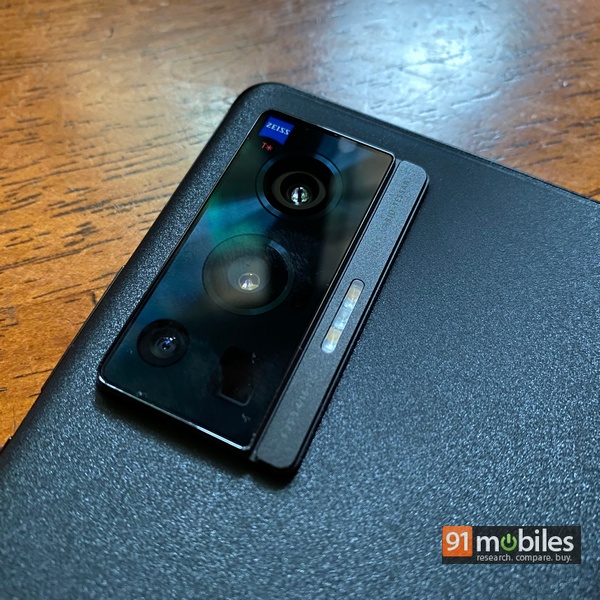
Video shooting capabilities of the device are above average although I did expect more from a sensor that packs in an actual gimbal. The ultra stabilisation mode can shoot 1080p 60fps but the sensor’s ability to reduce shake is not perfect. In that regard, the iPhone 11 Pro got a marginally better video out of its normal OIS 12MP primary camera as did the OnePlus 9 Pro although it could only manage 30fps at 1080p. The 32MP selfie camera brings sharp facial details and excellent skin tones. The sensor does detect low light and brightness up the panel for a more evenly exposed shot. Overall, I would have to say that in several areas, the Vivo X70 Pro has the propensity to pull off some of the most exquisite photos I have seen on smartphones under Rs 50,000.
Performance and software
You’re not only paying a premium for the X70 Pro’s camera but also its performance. Packing in a Dimensity 1200SoC from MediaTek, heavy-duty tasks such as GPU-intensive gaming, running a ton of heavy apps and switching between them, operating split-screen, or even amateur 4K video editing on the device are handled well. I have used my fair share of Dimensity 1200 phones, albeit at a much lower price points, and have never come out disappointed. I ran a CPU throttling test on the device as well to see how well it sustained performance under load and results show the X70 Pro maintaining a good 75 percent of its peak performance after 30 minutes.
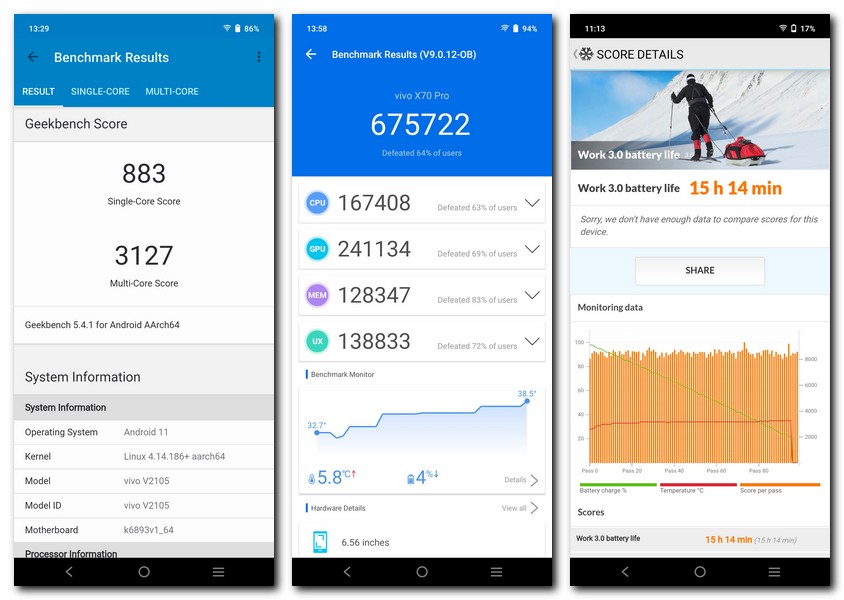
Benchmark numbers are also indicative of the device’s excellent processing prowess with scores of 675,722 on Antutu V9.0.12 alongside 883 and 3,127 on Geekbench 5’s single-core and multi-core tests respectively. While these results are not in the same ballpark as the Qualcomm Snapdragon 888, incidentally available on devices cheaper by 20-25 percent, the average user will not be able to tell much of a difference. BGMI is capable of running at Extreme frame rate option but only when the graphics are set at Smooth. I ran a 30-minute game session on these settings without even seeing a hint of a frame drop and the device remained reasonably cool in my hand. You do have fast LPDDR5 RAM up to 12GB and 256GB of UFS 3.1 storage as well.
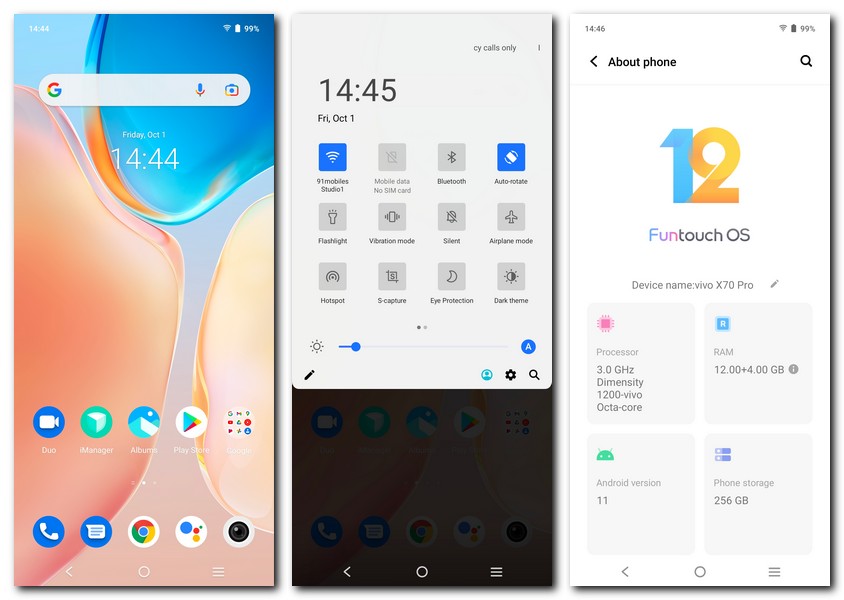
Other aspects of the device include a fast in-display fingerprint sensor and an even snappier facial detection. As I had mentioned before, the single speaker at the bottom should have been paired with stereo output via the earpiece. As for 5G, the Indian telecom infrastructure is not set up currently for me to test this feature out but the wait is likely to be short. Regular 4G LTE connectivity worked as well as you can expect with no call drops or loss of connectivity to report on Noida’s Jio network. The earpiece and microphone do their job as I had expected from the device. Software-wise, the phone runs on Vivo’s FunTouchOS 12 based on Android 11. You can check out more details regarding that in my colleague’s X70 Pro+ review.
Battery
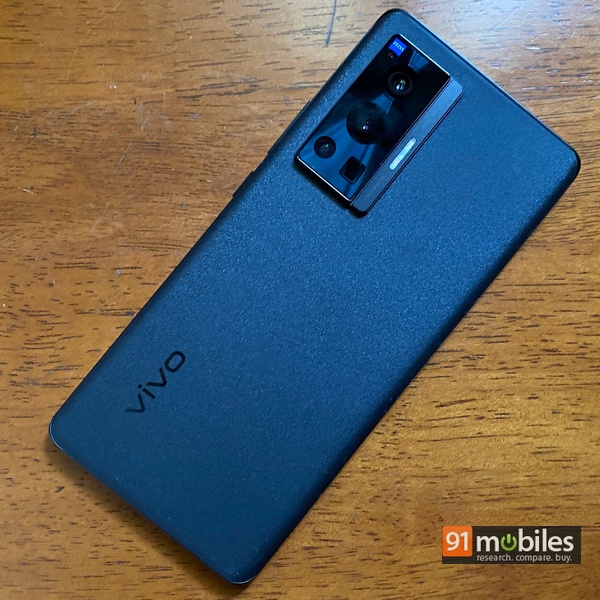
The battery life on the device is in line with what the competition offers. The capacity of the cell is 4,450mAh and it is supported with 44W FlashCharge technology via USB C. My daily usage involved a lot of streaming on OTT platforms. I binged four episodes of Squid Game on Netflix and the battery tanked by about 40 percent in 4 hours, which I think is just above average. After playing a couple of high-intensity games, I had to look for a charger by the end of the day. PCMark 10’s Battery test gives the device a score of 15 hours and 14 minutes. Even so, the fast charging on the phone is able to juice up the device in less than 60 minutes.
Final verdict
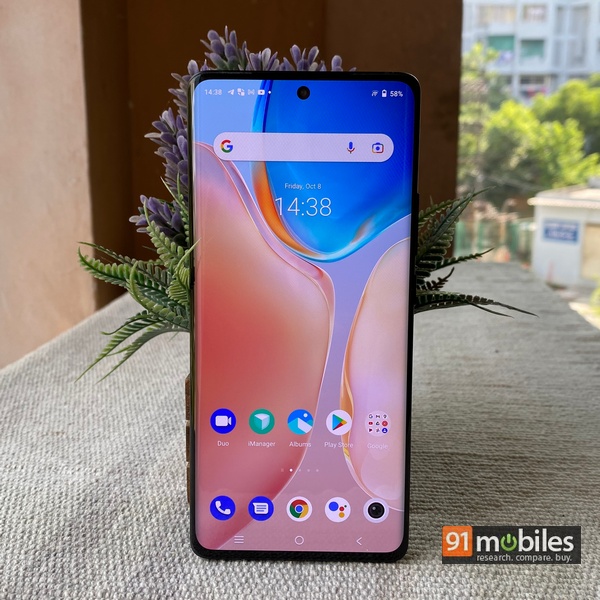
The Vivo X70 Pro starts at a price of Rs 46,990 for the 8GB + 128GB version. The price seems slightly high considering the chipset being used and the fact that an AMOLED 120Hz panel is pretty much a staple for quite a few budget flagships these days at much lower prices. However, the Vivo X70 Pro shines as far photography is concerned and a design that is, in my opinion, the best in the market for its price. Stereo speakers are missing, the software can surely do with less bloatware, but I believe that in the overall scheme of things, the X70 Pro’s excellent optics outweigh these omissions.
Editor’s rating : 3.5 / 5
Pros:
- Premium design
- Excellent cameras
- Decent performance
Cons:
- Lacks stereo speakers
- Bloatware
- Seems priced on the higher side
The post Vivo X70 Pro review: camera champ first appeared on 91mobiles.com.
via ©91 Mobiles









ليست هناك تعليقات:
إرسال تعليق